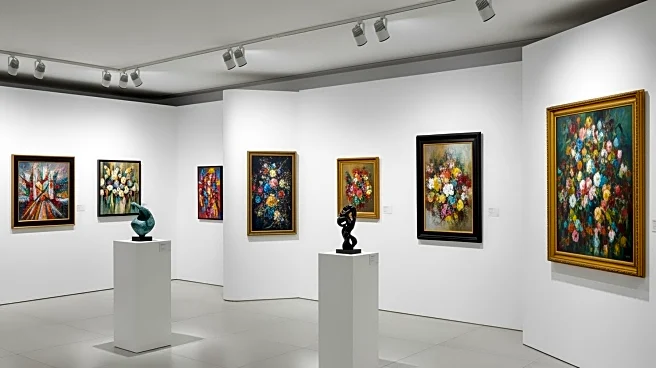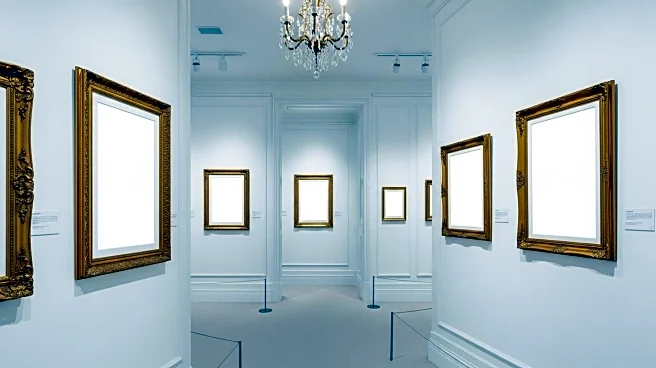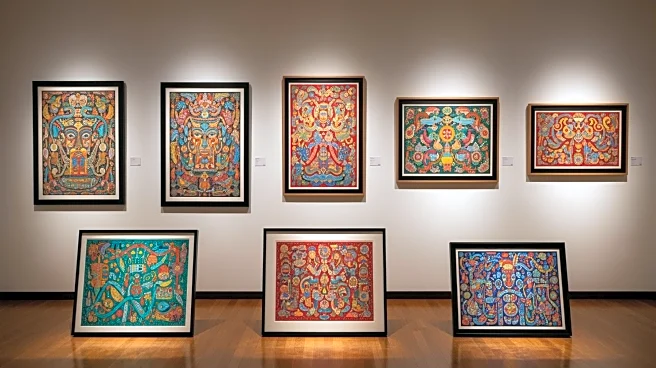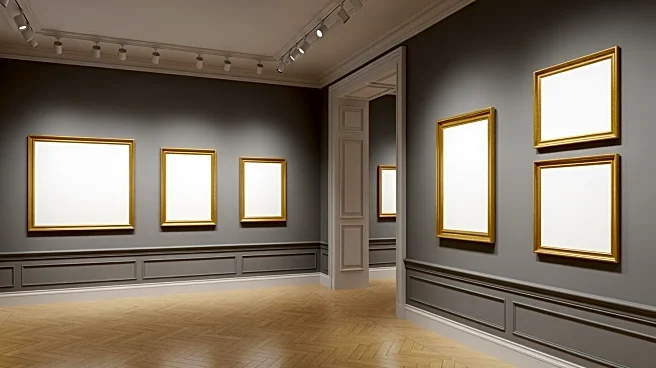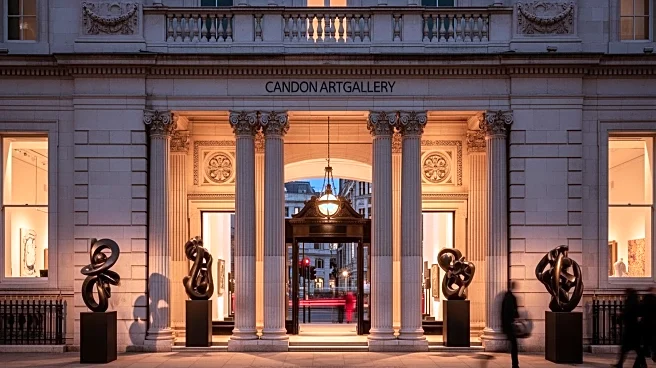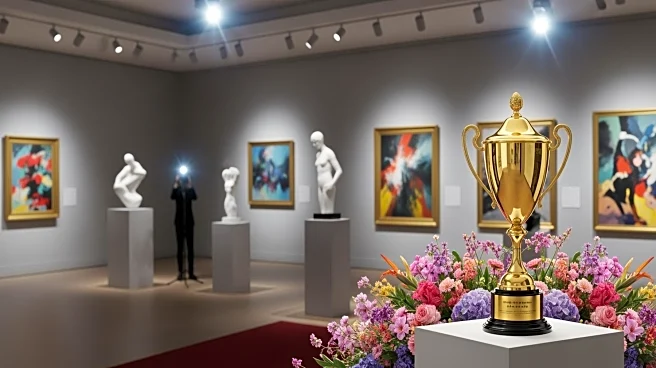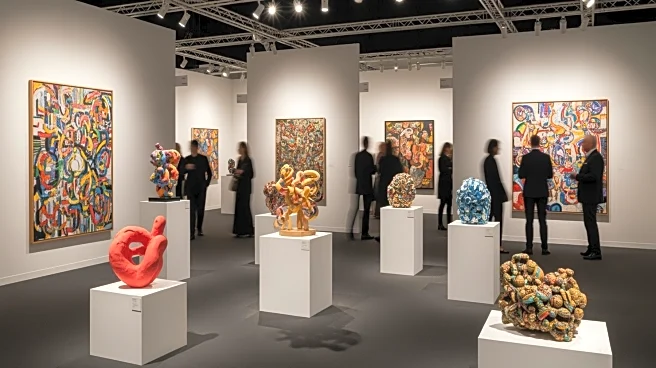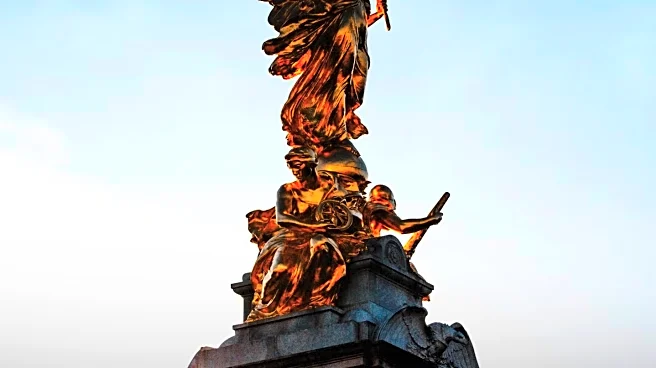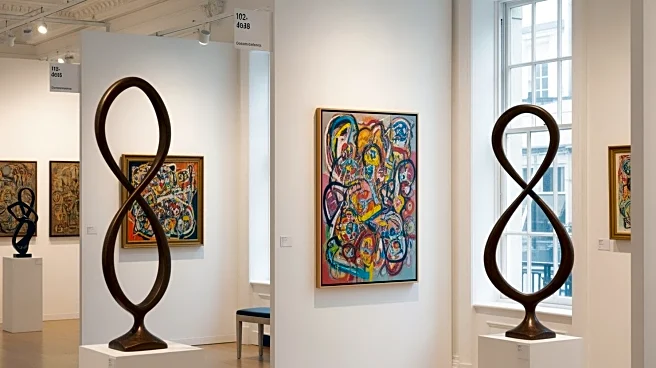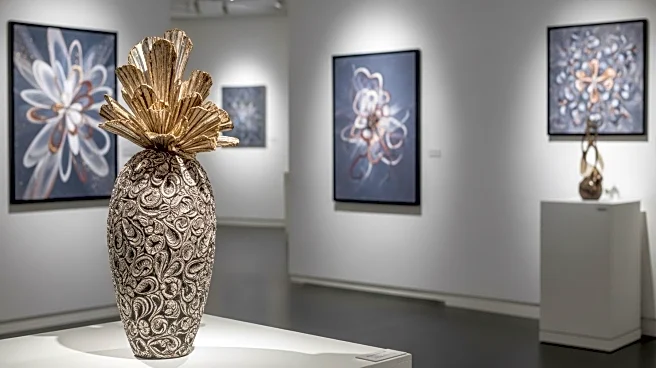What's Happening?
London's Frieze Week is bringing renewed optimism to the art market, with emerging artists and galleries injecting fresh energy into the scene. The event is showcasing young talent, with sections like Focus highlighting new galleries. Despite recent challenges,
including a boom-and-bust cycle and changing collector interests, the market is seeing a correction. Veteran dealers are adapting by balancing high-value secondary sales with promoting emerging artists, creating a dynamic environment that is attracting attention and sales.
Why It's Important?
The art market's recovery during Frieze Week is significant for the global art community, indicating potential growth and stability. Emerging artists and galleries are gaining visibility, which can lead to increased investment and interest in contemporary art. This shift may influence market trends, encouraging a focus on new talent and innovative exhibitions. The success of Frieze Week could set a precedent for other international art events, impacting how art is marketed and sold worldwide.
What's Next?
Following Frieze Week, the art market will continue its fall sprint with upcoming events like Art Basel Paris and mega auctions in New York. These events will test the market's resilience and ability to sustain the positive momentum seen in London. Dealers and galleries will need to strategize to maintain interest and sales, potentially influencing pricing and exhibition choices. The focus on emerging talent may continue to shape the market, driving innovation and attracting new collectors.
Beyond the Headlines
The emphasis on young galleries and artists during Frieze Week highlights a cultural shift towards valuing fresh perspectives and diversity in art. This trend may lead to long-term changes in how art is curated and appreciated, fostering a more inclusive and dynamic art community. The success of emerging artists could challenge traditional market structures, encouraging a reevaluation of how art is valued and sold.
